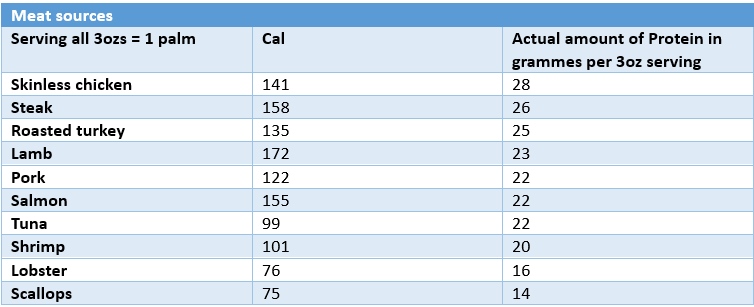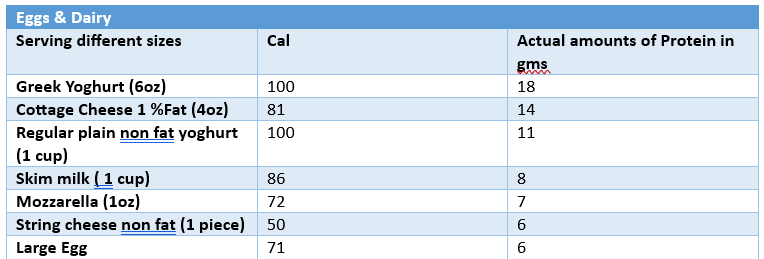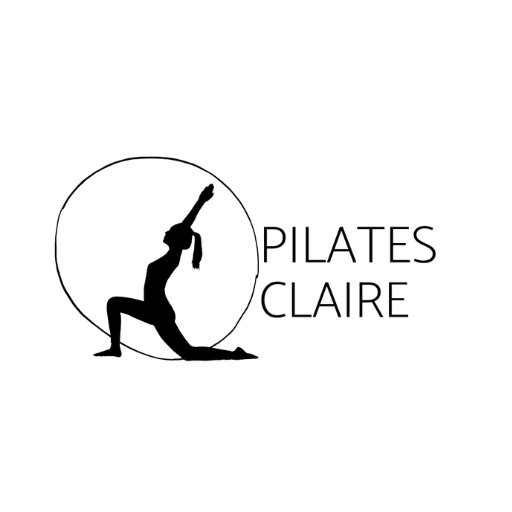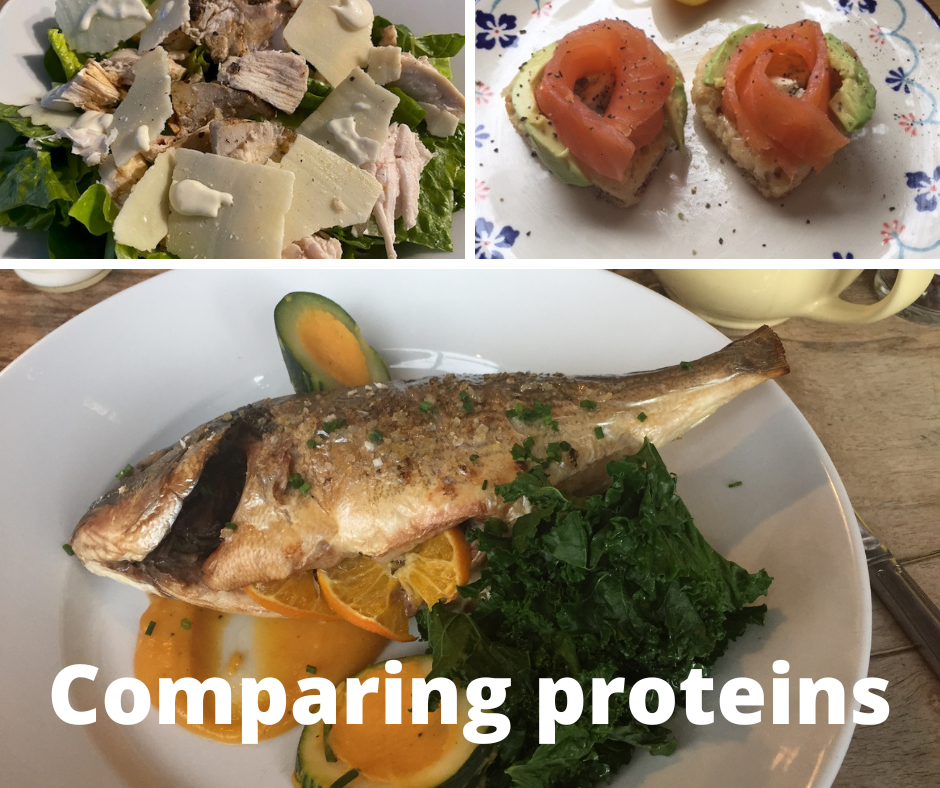Part 3 Comparing Proteins
The easiest way to compare proteins is to put them in a table. Now some of you might not be interested in this at all and I understand that.
But for those of you that are, you might find these tables really useful and if you're trying to transform your shape, you can see what gives you 'the most protein' bearing in mind what we said in Part 1 about complete proteins.

It doesn't need me to point it out, but if you look at the table above 'meat' sources, which includes fish, you will see that they they are the 'heavyweights' in the amount of protein they contain . So for example if I had 3ozs of lean chicken , which is about a palm size portion, it actually gives me about 28 gms of protein.

Here in the table above we have the amounts for diary, there are different serving sizes, the Greek yoghurt is a big 'heavyweight' , this is non flavoured & fat free. The eggs move up the scale as we often eat 2 eggs as a serving, rather than just 1.

In the table above we have plant sources of protein, most of these aren't complete protein sources & need to be eaten with other foods to obtain all the amino acids needed for the body. The exceptions are Soy beans & quinoa as they are complete proteins.

And lastly, we have the nuts and seeds table, peanut butter is a particular favourite of mine & you'll often find me spreading a good quality one on a piece of sourdough. And it goes without saying that these nuts are unsalted & not cooked in anything like honey etc.
I hope you find these tables useful and interesting.
Claire x

Copyright © 2023 PilatesClaire
